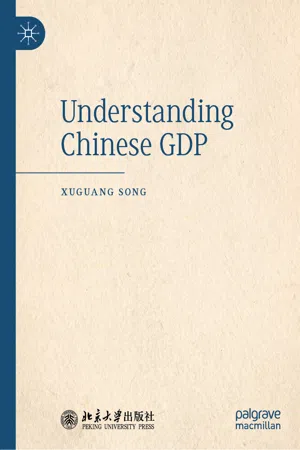1.1 Dispute Arising from a World Bank Report
1.2 Long-Standing Debate
1.3 Difficulties in Measuring Economic Scale
1.4 Two Sets of GDP Statistical Data
1.5 Different Statistical Conclusions Can Be Reached Through Different Observation Perspectives
1.6 The World Bank’s Two Sets of Rankings
1.1 Dispute Arising from a World Bank Report
On April 30, 2014, the World Bank published the report
Purchasing Power Parities and Real Expenditures of World Economies: Summary of Results and Findings of the 2011 International Comparison Program, a summary of the preliminary results of the Eighth Round International Comparison Program (ICP 2011). According to this report, China’s purchasing power parity (PPP) was 3.506 in 2011. Based on this statistic, China’s GDP in 2011 was 47.16 trillion Chinese yuan (CNY) or an equivalent of 13.46 trillion US dollars (USD) after conversion, accounting for 14.9% of the global share. The GDP in the United States was USD 15.53 trillion over the same period, accounting for 17.1% of the global share. China’s economic scale reached 87.0% of that of the United States in 2011, indicating that China’s economic scale was already approaching the United States then. Further data from the World Bank shows that China’s GDP in 2013 was USD 16.16 trillion, while that of the United States was USD 16.8 trillion (see Table
1.1); these numbers clearly indicate that only a small difference could be observed between two countries’ economic scales. In 2013, China’s GDP growth rate was 7.7%, while that of the United States was 1.6%.
1 China’s economic growth rate was significantly higher than that of the United States. Therefore, the World Bank predicted that in 2014, China was likely to surpass the United States and become the world’s largest economy.
2 Table 1.1GDP estimated by the World Bank using the purchasing power parity method (Unit: 100 million USD)
Year | China | United States | Japan | India |
|---|
1990 | 11,427 | 59,796 | 23,780 | 10,200 |
1991 | 12,260 | 61,740 | 25,387 | 10,651 |
1992 | 13,691 | 65,393 | 26,179 | 11,491 |
1993 | 16,012 | 68,787 | 26,848 | 12,323 |
1994 | 18,637 | 73,087 | 27,656 | 13,424 |
1995 | 21,514 | 76,640 | 28,782 | 14,742 |
1996 | 24,301 | 81,002 | 30,072 | 16,144 |
1997 | 27,190 | 86,085 | 31,075 | 17,086 |
1998 | 30,040 | 90,891 | 30,783 | 18,339 |
1999 | 32,856 | 96,657 | 31,160 | 20,246 |
2000 | 36,163 | 102,897 | 32,898 | 21,502 |
2001 | 40,062 | 106,253 | 33,771 | 23,055 |
2002 | 44,372 | 109,802 | 34,717 | 24,300 |
2003 | 49,796 | 115,122 | 35,690 | 26,734 |
2004 | 56,321 | 122,770 | 37,534 | 29,643 |
2005 | 64,702 | 130,954 | 38,896 | 33,434 |
2006 | 75,145 | 138,579 | 40,649 | 37,655 |
2007 | 88,064 | 144,803 | 42,643 | 42,443 |
2008 | 98,435 | 147,203 | 42,895 | 44,955 |
2009 | 108,332 | 144,179 | 40,811 | 49,143 |
2010 | 121,098 | 149,583 | 43,227 | 54,841 |
2011 | 134,959 | 155,338 | 43,862 | 59,630 |
2012 | 147,827 | 162,446 | 45,048 | 63,546 |
2013 | 161,577 | 168,000 | 46,244 | 67,744 |
One dropped pebble can create a thousand ripples. ...
